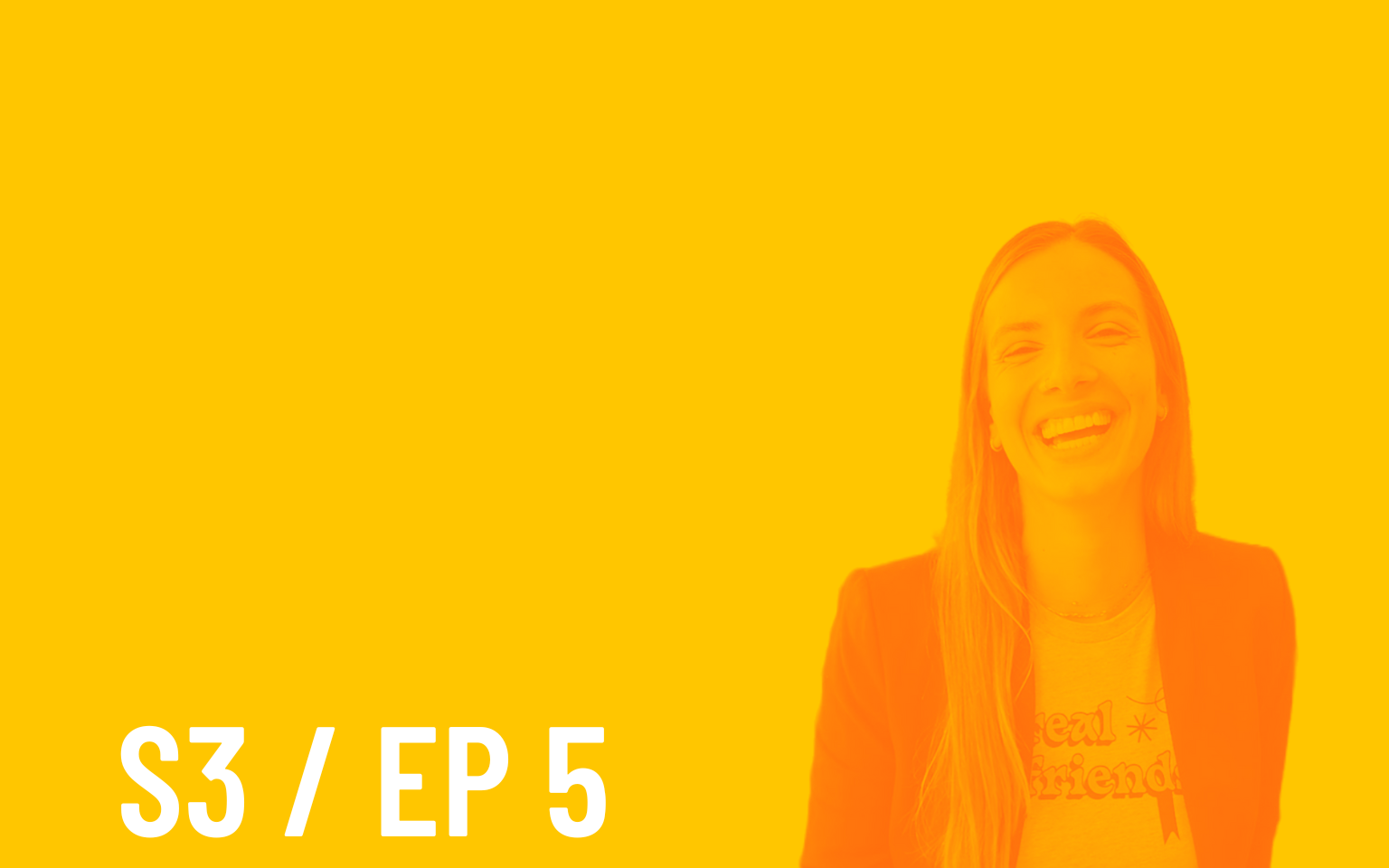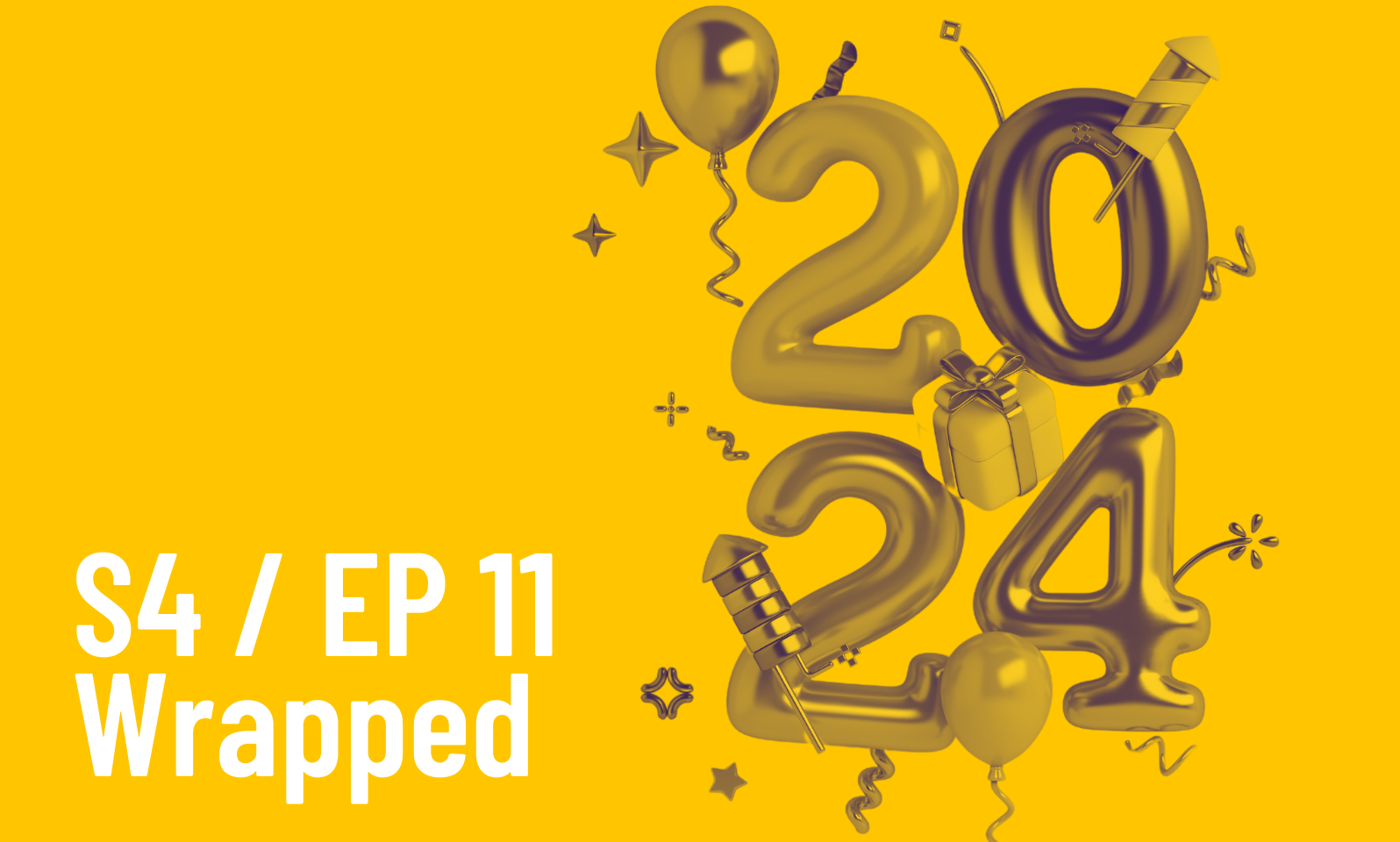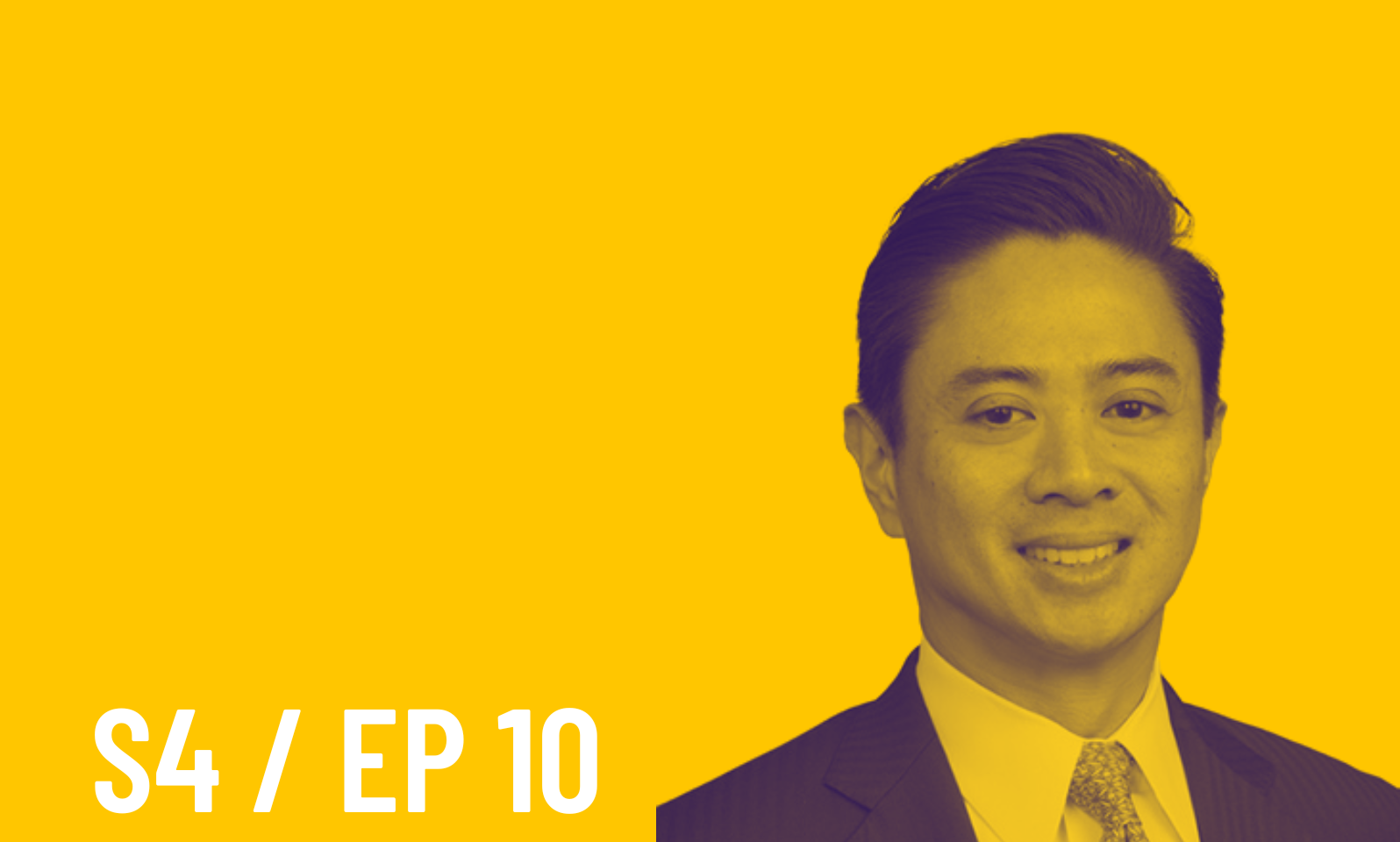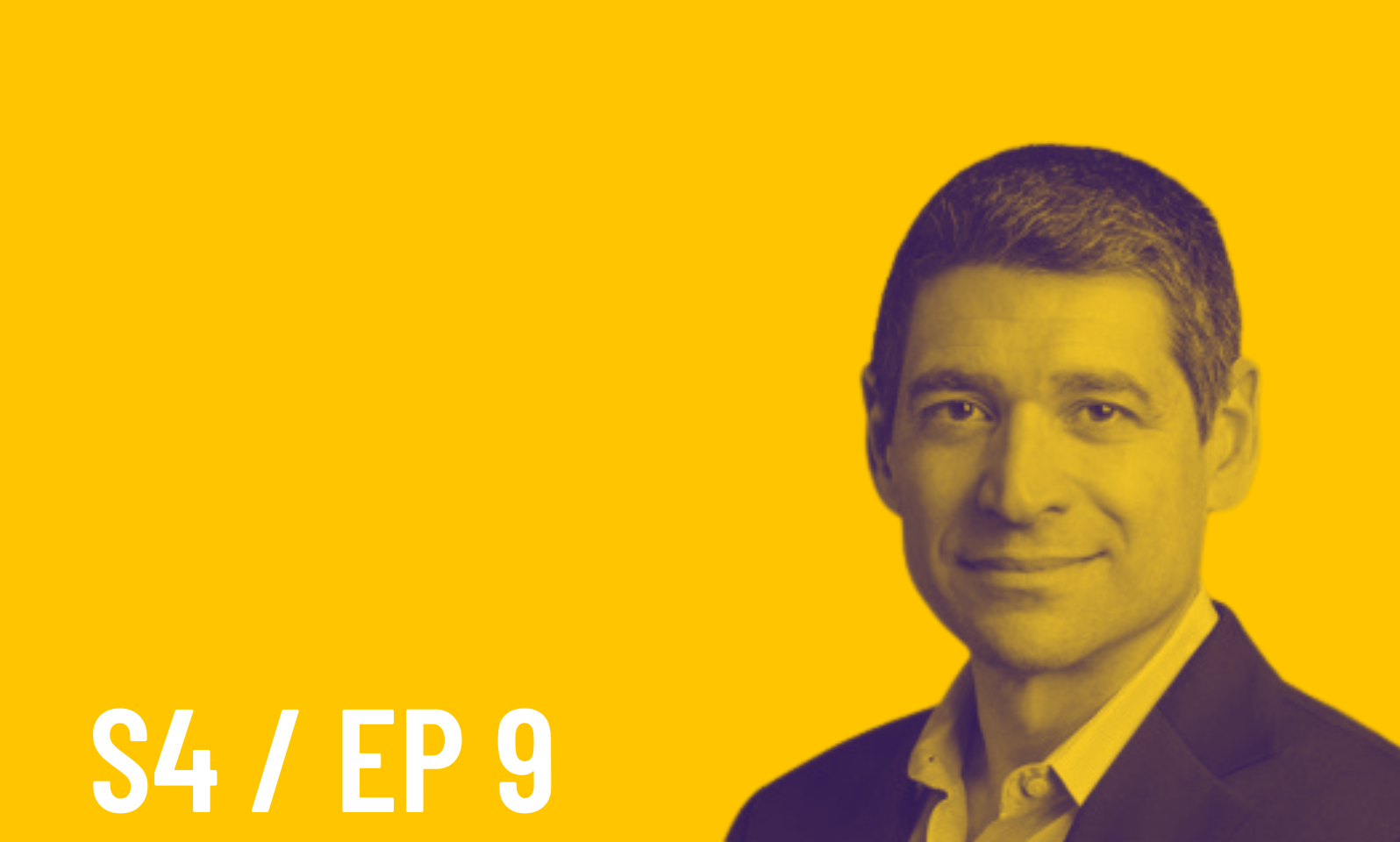Demand Gen Part 1: How B2B Buying Behavior has Changed (and What It Means for Healthcare Marketers)

Episode 5, Season 3
Part 1: How B2B Buying Behavior has Changed (and What It Means for Healthcare Marketers)
- April 21 2023
fuoco’s Senior Digital Marketing Manager Erica Freckelton joins our host, Kriste Goad, in a three-part demand generation special. Tune in as they discuss changes in B2B buying behavior, how to evolve your marketing strategy, and the advantages of first-party data in part one.
Episode Description
Erica Freckelton has worked with top-tier tech companies and healthcare organizations building marketing pipeline and driving growth. She started her career in the agency world and spent time in-house building digital marketing teams at tech companies before joining fuoco as senior digital marketing manager.
In this episode, we discuss:
- The evolution of the B2B buyer
- Updating your demand generation strategy to match today’s buyer and how to successfully employ it in your company
- Better marketing powered by first-party data

“The thing that enables organizations to be successful, in my experience, has been psychological safety. It’s a willingness to fail openly on a team and try new things and be like, ‘you know what, we tested something, we’ve learned from it, and this is what we’re doing differently next time.’ “
Erica Freckelton
Sr. Digital Mktg. Manager
More From This Episode
Show Notes
Transcript
Recommended Reading
Show Notes
(2:17) Erica details how the B2B consumer has evolved
(3:25) Erica discusses the importance of leaning into first-party data in marketing
(4:27) Kriste and Erica dig into how marketers can pivot to fit the needs of the B2B consumers
(7:21) Erica explains the challenges of implementing a Demand Creation & Demand Capture approach
Transcript
[00:00:00.330] – Kriste Goad
Hey, welcome to How It’s Done. A podcast for Curious Marketers. I’m Kriste Goad. I’ll be your host, and I’m really glad you’re here. Today we’re talking with Fuoco’s Senior Digital Marketing Manager, Erica about demand generation. In a special three-part series, we’re going to talk about how to create brand awareness with your relevant and targeted stakeholders, why you should be evolving your strategy, and how to measure success with dark social. Sorry, Erica. I don’t know why I have to say it that way.
But first, a little about Erica. She’s equal parts analytical and creative. She has a keen eye for uncovering new opportunities to improve the digital experience. She’s worked with top-tier tech companies and healthcare organizations at agencies, in-house, freelancing. She really focuses on building marketing pipelines and driving growth. Erica is a self-described marketing nerd. Love that. And she’s endlessly fascinated by the intersection of psychology and online trends. A former Michigander with a stop in Nashville, Erica now enjoys the sunny days in America’s most casual city, San Diego, otherwise known as San Diego. When she’s not in front of a laptop, you might find Erica skateboarding with her dog or teaching him a new trick. Or you might find her reading on the couch, rocking those lazy reader glasses from TikTok.
[00:01:49.340] – Erica
They’re great, folks.
[00:01:51.970] – Kriste Goad
Welcome to the show, Erica.
[00:01:53.830] – Erica
Thank you. It’s so great to be here. I’m excited.
[00:01:56.220] – Kriste Goad
I’m excited, too. Let’s dive right in.
[00:01:58.890] – Erica
Let’s do it.
[00:01:59.740] – Kriste Goad
We’re talking about social media and the ever changing landscape. So, as I said, we’re breaking down this complex issue into three digestible parts. And Erica, I’m going to start with this question. How has the B to B consumer evolved and how has that impacted strategy?
[00:02:17.390] – Erica
Yeah, absolutely. We’ve got such high expectations for what a digital consumer experience looks like, what it should feel like, and that really rings true in healthcare, too. It impacts our brand perception. It impacts our buying behavior. We expect a couple of different things. Top notch educational content, category level topics, product and service benefits. We want to be able to consume that content without intrusive follow up from sales on our own time, on our own schedule. But with that being said, we very much expect companies to be accessible to us in the ways that consumer brands are also accessible to us. Online scheduling, chat when we want to, whether or not that’s during business hours. We also expect same privacy and security standards we’ve come to expect in consumer segments. All of this is happening. Digital landscapes responding to privacy concerns attributions getting harder cookies are going away. It’s a challenging time for marketers.
[00:03:19.310] – Kriste Goad
So what should integrated marketing leaders be doing about all that?
[00:03:25.120] – Erica
A couple of different things. First thing is really leaning into first party data. That’s the information you’re collecting directly from your customers. Google did some research on this and.
[00:03:36.220] – Kriste Goad
Can I stop you there? So when you say that are you talking about when you’re collecting information from Ctas, your ads, or from your website or maybe on your website, whatever you’re collecting through your CRM, is that what you’re referring to?
[00:03:53.550] – Erica
Yes. Anywhere that you’re interacting with your customers directly and capturing information from them, that’s going to be the most valuable in terms of are you able to segment your database, communicate with them? Google did some really interesting research on this and found that businesses that are using this data for their key marketing functions saw almost a three times uplift in revenue and also a 1.5 increase in cost savings.
[00:04:18.700] – Kriste Goad
Wow.
[00:04:19.080] – Erica
So that’s pretty big.
[00:04:22.450] – Kriste Goad
But is that because it’s just cleaner data? Like those are actually, people have raised their hands?
[00:04:27.420] – Erica
Yes, it’s better data. There’s higher intent there. But the reason brands aren’t doing this is because it’s really hard. It takes a lot of effort to set that up and capture that information in a thoughtful way and then deploy it in a thoughtful way. So as brands, we really have to think about how we’re evolving our Strategies to accurately capture where customers are coming from, make sure that we’re doing attribution in ways that reflect accurate behavior, and also kind of shift how we’re thinking about the role of marketing as a whole, moving away from this place of we’re prioritizing MQLS above everything else. Lead gen lead gen to a place where we want to educate our audiences and we want to help them name their problems, create educated consumers. And as we do that, along the way, we’re able to learn more about them, understand what drives them, and really create more of that content that speaks exactly to their individual pain points. And that’s what helps us fill in the gaps that are now created by the data. So we’re spending less of our time focused on prospects who are actively in that I want to buy right now mode, which seems scary for businesses.
[00:05:42.290] – Kriste Goad
It’s very scary. It’s scary for me to even think about it, Erica.
[00:05:45.450] – Erica
It seems terrifying. It seems so scary. But if you think about the relative size of these segments, there’s a much bigger segment out there. People who are just educating themselves on the market, problems, they’re looking to their peers to understand what they are doing, as opposed to that 1% of people who are actively in buy mode. And so if we can focus on that bigger segment, we’re really accelerating deal velocity for that 1% once they get there.
[00:06:14.810] – Kriste Goad
So let me make sure I’m understanding what you’re saying. Spend more time educating, less time in this kind of what I would call almost a hard press sell mode.
[00:06:27.170] – Erica
Yes.
[00:06:28.350] – Kriste Goad
Because then you’re going to, over time, accelerate because you’re going to have a bigger block of people and prospects in your pipeline of interested potential buyers.
[00:06:43.610] – Erica
Yes.
[00:06:44.420] – Kriste Goad
And then Google in their own research is reinforcing that notion, if I’m hearing you correctly.
[00:06:53.960] – Erica
Absolutely.
[00:06:54.700] – Kriste Goad
So it takes a little more time on the front end, I guess sort of up front, but once you’re doing that, then you’re constantly feeding that funnel.
[00:07:04.010] – Erica
Yes, okay, that is exactly it. It takes more investment in the front end, but once you get it going, I think the feedback that you’ll get from sales in particular is the conversations they’re having with people are much more informed and they’re starting their conversations further down the funnel. And I think that’s really valuable.
[00:07:21.930] – Kriste Goad
So spend the time also really understanding sort of the stages of that buyer’s journey and developing content for each of those.
[00:07:32.210] – Erica
And it can be challenging for marketers because that first part of the buyer’s journey, shifting your attention to that. It’s so hard in an organization to prove the value of that effort, to prove why you’re doing that, and to prove that it has an impact lower down the funnel, especially because all of our Attribution tools are really set up to measure that direct lead, capture, demand, gen, quote unquote activity. Like, we’re out here, we’re doing paid search and we’re driving them to a form. That’s the kind of activity our Attribution tools are built to capture. So if you shift your strategy to focus on education and podcasts, for example, it’s a little bit harder for marketers to prove the value of that investment. But if you get smart about evolving how you’re thinking about Attribution, measuring where your audience is coming from, if you’re asking them, where did you find us? Comparing that against what your software is telling you, you might find some really interesting discrepancies in that folks are finding you elsewhere and then going to Google typing in your brand name some keywords that might pull you up. And so maybe you’re over indexing on organic search, but they’re not all finding you from organic search.
[00:08:47.080] – Kriste Goad
So how long would you estimate for listeners or marketers that are open to this shift if not doing it already? Because obviously some people are obviously doing this and doing it quite well. What does that timeline look like?
[00:09:02.270] – Erica
That’s such a good question. I think that depends on a lot of factors like the size of your team and what resources you have to dedicate to it. It’s really going to vary from a small and scrappy team of just a handful of folks who are really trying to bootstrap this with the content they have available. I think that’s going to be a much slower role than if you have a bigger marketing organization and you can really get together at annual planning, quarterly planning, whatever kind of planning cycles you do and get all of. Your marketing departments on board with this so that you have your content team and your demand team and all of these departments really tracking towards the same goal. It does feel like the kind of shift where I think it’s the kind of shift that you can get the team rowing in the same direction within the quarter. But with that, I will say I had a really interesting client case study in the past where they made the shift, the marketing team was so excited about it. They’re seeing really promising leading indicators. The thing they hadn’t done was update the dashboards.
[00:10:04.040] – Erica
And so while the marketing team is so excited about we’re seeing low intent leads drop, we’re seeing high intent leads increase, this is great. Sales is concerned. Sales is saying, we’re seeing the volume of leads go down. What have you done? You have broken marketing. Yeah. And marketing leadership is like, no, you’re just not getting leads from like, syndicated content anymore. It’s okay. We’re getting more leads from people who have shown up to our events and talked to us, and we’ll take five of those over 15 from syndicated content any day.
[00:10:36.350] – Kriste Goad
They’re like way, more qualified.
[00:10:38.130] – Erica
Right. But the learning from that was you have to update your dashboards and socialize that across the team before you flip that switch. Otherwise you’re going to be getting panicked calls from sales leaders.
[00:10:53.730] – Kriste Goad
So in your experience, how tough is it to kind of make that shift, I guess mentally and then within an organization especially, I think it might be a little easier logistically and timeline wise for a smaller scrappier organization or team than it might like a large, huge enterprise. But also I can see just based on a lot of our clients, just sort of my own sort of let’s just get out there and let’s just get going kind of mentality. It might be hard. That’s a hard switch to make too, because you’re just like, no, we just need some leads. We need to get going, we need to get in market with something.
[00:11:37.730] – Erica
Right.
[00:11:38.100] – Kriste Goad
So I’m just curious, about your experience in that.
[00:11:40.450] – Erica
And that’s such a funny question because I feel like a lot of marketing teams are in the position where maybe every quarter leadership is coming to them and saying, we’re halfway through the quarter or we’ve got a month end till quarter, what are we doing to drive leads? That is the wrong conversation to be having and the wrong time to be having it. And so I think
[00:12:00.169] – Kriste Goad
Why is that?
[00:12:00.790] – Erica
It’s entirely too late. If you’re trying to get these
[00:12:03.240] – Kriste Goad
True.
[00:12:03.700] – Erica
These things in by end of quarter, you should have asked me nine months ago. And so I think the beauty of a strategy like this is we’re asking the question nine months ago. This is a long-term strategy that’s going to see long-term success. The thing that enables organizations to be successful at this, in my experience, has been psychological safety. It’s this willingness to fail openly on a team and try new things and be like, you know what, we tested something, we’ve learned some things from it, and this is what we’re doing differently. And I think all of the marketing teams that I’ve been on where leadership encourages this test and learn mentality small scale experiments and leadership from the executive level down to marketing leadership, really sets this example of what we’re learning from our work here. Those are the organizations that make much more progress with approaches like this. And I find the other ones kind of stay stuck in. Yeah, we know there’s a better way, but we need these by the end of the quarter.
[00:13:06.650] – Kriste Goad
So if I’m hearing you correctly, it’s like set your expectations up and down and across the organization. Here’s what we’re going to do, here’s our intention and here’s how long it’s going to take.
[00:13:19.550] – Erica
Yes.
[00:13:20.260] – Kriste Goad
And stick to it.
[00:13:21.520] – Erica
And stick to it. That part. You can’t bail when it gets scary because that’s when it looks like it doesn’t work.
[00:13:28.530] – Kriste Goad
Right, okay. And so then on a quarterly basis, the conversation is different. It’s more like, okay, what did we learn? What’s working? What’s not working? What do we need to tweak? Maybe we need to do different content.
[00:13:41.110] – Erica
Exactly.
[00:13:41.900] – Kriste Goad
Then it’s just sort of tweaking your plan but you’re sticking to it.
[00:13:45.300] – Erica
Yeah, it’s not this dramatic strategy shift every quarter, which I feel like so many marketing teams are used to.
[00:13:51.290] – Kriste Goad
Yes, very common. Very common.
[00:13:53.820] – Erica
And that’s a wild way to work. You can’t get long-term results that way.
[00:13:57.500] – Kriste Goad
I hear you. Okay. This has been amazing, Erica. I learned something from you every single day. I am not even kidding. So thank you for educating me and I know our listeners thank you too.
[00:14:10.800] – Erica
You are too kind.
[00:14:12.450] – Kriste Goad
Luckily, this is just a teaser for what’s to come. Next up in part two of our three part series is demand creation versus demand capture. So we’ll go a little deeper on that then in part three. And this one just might be my favorite dark social what the heck is it? I want to know too. So stay tuned. But wait, there is more. Erica, let’s sign off with our very popular burning question. My burning question to you today is what was your first job and what was your biggest learning from it?
[00:14:52.740] – Erica
My first job was ice hockey referee, age 13.
[00:14:57.400] – Kriste Goad
Stop it.
[00:14:58.370] – Erica
Biggest takeaway was I look phenomenal in stripes. Yeah, I was 13. I was referring girls 16 and under. They were bigger than me. They were older than me. I didn’t know that I had any authority in that situation. Fake it till you make it.
[00:15:13.920] – Kriste Goad
But you did. I bet you crushed it.
[00:15:17.380] – Erica
We’ll never know. We’ll never know.
[00:15:19.830] – Kriste Goad
Are you a hockey player?
[00:15:21.230] – Erica
I did play hockey at the time. That was my childhood sport.
[00:15:24.250] – Kriste Goad
Oh, wow.
[00:15:25.190] – Erica
Yeah.
[00:15:25.770] – Kriste Goad
I don’t know a lot of girls that play hockey.
[00:15:27.870] – Erica
Yeah, I was like one of two girls on my team at the time, so it was pretty fun.
[00:15:31.800] – Kriste Goad
Wow, so you’re a tomboy.
[00:15:33.630] – Erica
Yeah. Oh, yeah, totally.
[00:15:35.410] – Kriste Goad
Love it. Okay, we’re going to have to learn more about that on another podcast, another time. I don’t know, over a cocktail? Who knows this has been amazing, Erica. For all you listeners out there, do not miss the rest of our series and all future podcasts. I’m excited about what we have planned for this season. Erica has helped in some of that planning, so be sure to subscribe to how it’s done wherever you get your podcast. You can also find the podcast, plus learn more on our website, which is Growwithfuoco.com Growwithfuoco.com.
[00:16:19.600] – Kriste Goad
That’s it for now. Thanks so much for listening. We’re looking forward to keeping great conversations coming your way as we grow this podcast. There’s even more great content from our conversations on our blog. Be sure to check it out at growwithfuoco.com that’s growwithfuoco.com . Stay tuned until next time, and no matter what, stay curious.
Recommended Reading
- Follow Erica on LinkedIn
- Listen to more How It’s Done: A podcast for curious marketers
More From The How It’s Done Podcast
Want to be a guest on a future episode?
Share your thoughts directly with our show host, Kriste Goad.



